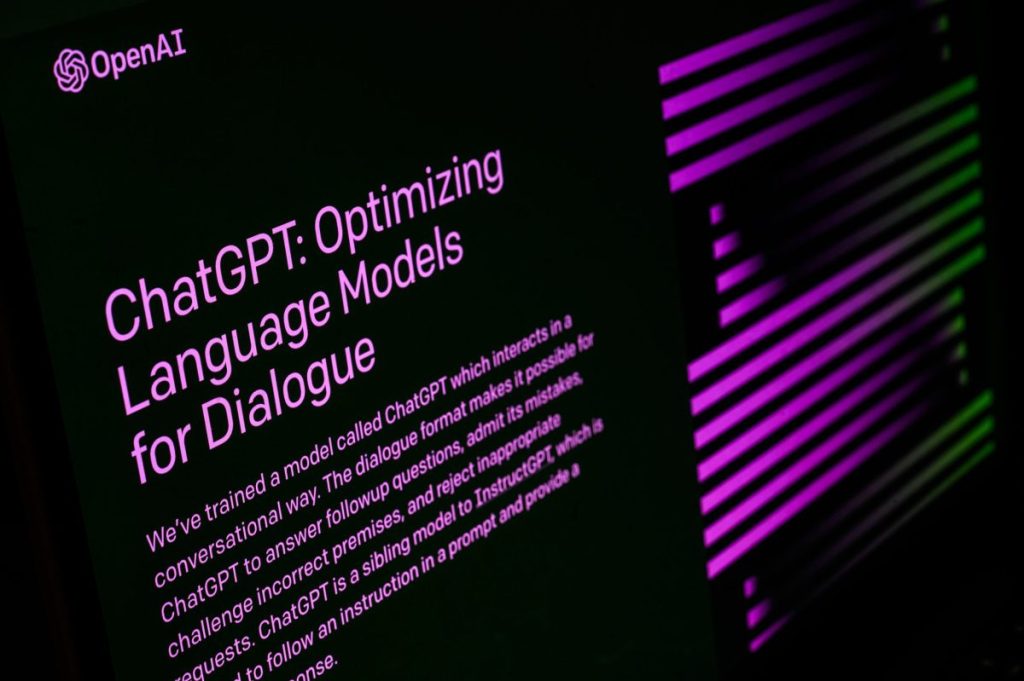Since its debut in November 2022, OpenAI’s ChatGPT has revolutionized the landscape of artificial intelligence, evolving from a simple text-based assistant to a multifaceted tool with a vast user base. This article delves into the significant milestones, challenges, and future prospects of ChatGPT as of April 2025.
Rapid User Growth and Expansion
ChatGPT’s trajectory has been marked by exponential growth. Initially designed to assist with tasks like drafting essays and coding through concise prompts, it has now become an integral part of daily operations for numerous individuals and organizations. By early 2025, ChatGPT boasts over 300 million weekly active users, underscoring its widespread adoption and the increasing reliance on AI-driven solutions in various sectors.
Strategic Partnerships and Technological Advancements
A pivotal moment in ChatGPT’s journey was OpenAI’s collaboration with Apple in 2024. This partnership led to the integration of ChatGPT into Apple’s suite of generative AI tools, collectively known as Apple Intelligence. This move not only expanded ChatGPT’s reach but also enhanced its functionality, offering users a more seamless and intuitive experience across Apple devices.
In the same year, OpenAI introduced GPT-4o, an advanced iteration of its language model. GPT-4o brought forth voice capabilities, allowing users to engage in more natural and dynamic interactions with the chatbot. This enhancement bridged the gap between text-based communication and voice-driven interfaces, catering to a broader audience with diverse preferences.
Introduction of Sora: Text-to-Video Model
Building on its commitment to innovation, OpenAI unveiled Sora, a groundbreaking text-to-video model. Sora enables users to generate video content based on textual descriptions, opening new avenues for content creation and storytelling. This development signifies OpenAI’s dedication to pushing the boundaries of AI applications beyond traditional text-based tasks.
Internal Challenges and Leadership Changes
Despite its successes, OpenAI has faced internal upheavals. The departures of co-founder and chief scientist Ilya Sutskever and CTO Mira Murati in 2024 raised questions about the company’s internal dynamics and strategic direction. Such high-profile exits often signal shifts in organizational priorities and can impact the morale and cohesion of the team.
Legal Battles and Copyright Concerns
OpenAI’s rapid ascent has not been without legal entanglements. In 2024, the company faced lawsuits from publications owned by Alden Global Capital, alleging copyright infringements related to content used in training AI models. These legal challenges highlight the ongoing debate over intellectual property rights in the age of AI and the need for clear guidelines and ethical considerations in AI development.
Elon Musk’s Legal Action
Adding to its legal woes, OpenAI encountered an injunction from Elon Musk, aiming to halt the company’s transition to a for-profit model. Musk’s intervention underscores the complexities and controversies surrounding the commercialization of AI technologies and the ethical implications of profit-driven motives in AI research and deployment.
Competitive Landscape and Global Positioning
As of 2025, OpenAI is navigating a competitive AI landscape, particularly with the emergence of Chinese AI firms like DeepSeek. These companies are rapidly advancing their AI capabilities, prompting OpenAI to reassess its strategies to maintain a leading position in the global AI arena. The competition emphasizes the need for continuous innovation and adaptation in the fast-evolving field of artificial intelligence.
Engagement with Policy Makers and Infrastructure Development
To bolster its standing and address regulatory concerns, OpenAI has been actively engaging with policymakers in Washington. This proactive approach aims to shape favorable policies and foster collaborations that support the ethical and responsible development of AI technologies. Additionally, OpenAI is embarking on an ambitious project to establish new data centers, enhancing its infrastructure to meet the growing demands of its expanding user base.
Future Prospects and Funding Initiatives
Looking ahead, OpenAI is reportedly preparing for one of the largest funding rounds in history. This initiative reflects the company’s commitment to sustaining its growth trajectory and investing in research and development to introduce more advanced AI models and applications. The anticipated funding will likely fuel further innovations and solidify OpenAI’s position as a leader in the AI industry.
Conclusion
ChatGPT’s evolution from a simple chatbot to a multifaceted AI tool illustrates the rapid advancements in artificial intelligence and its integration into daily life. While OpenAI has achieved remarkable milestones, it continues to face challenges that require strategic navigation. The company’s ability to innovate, address legal and ethical concerns, and adapt to a competitive global market will determine its future success and the continued relevance of ChatGPT in the ever-changing AI landscape.


